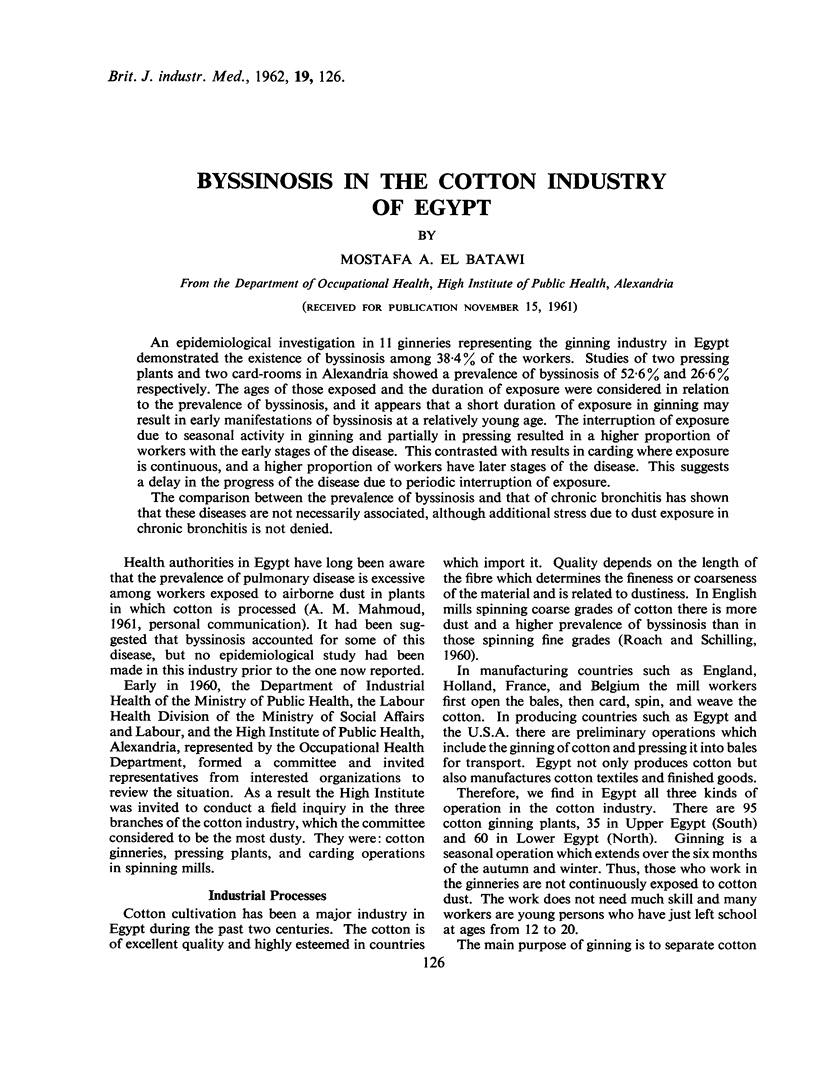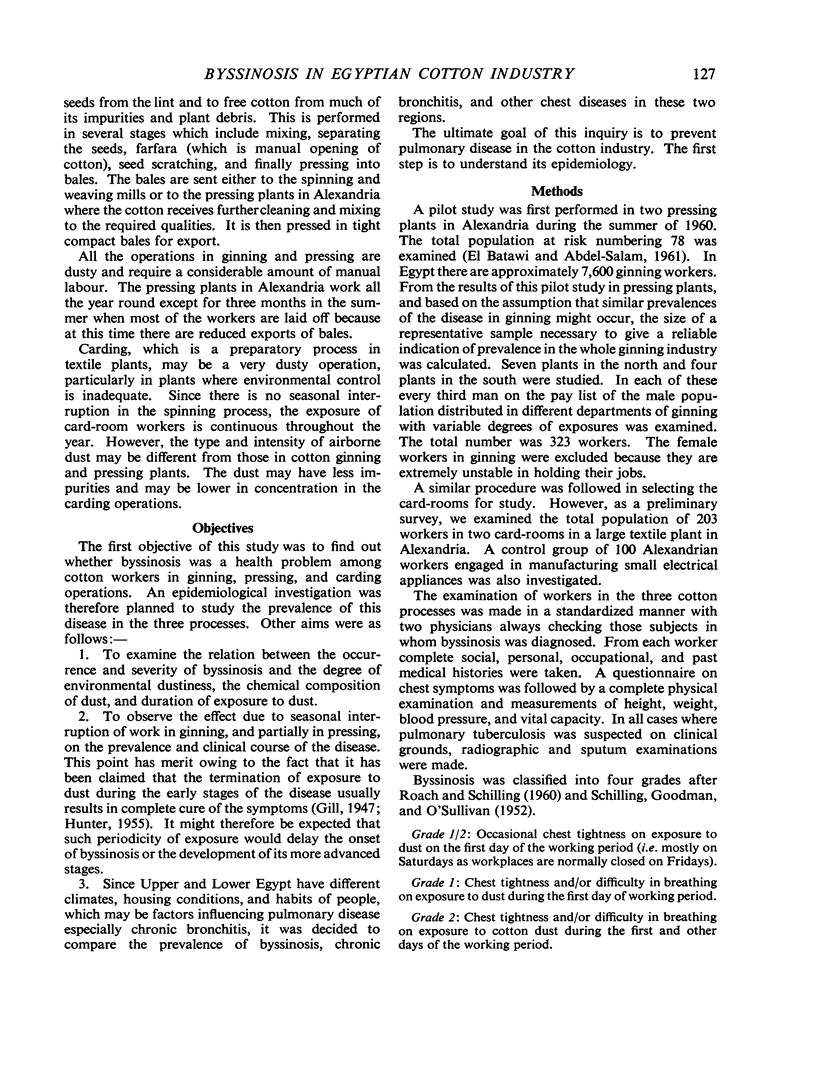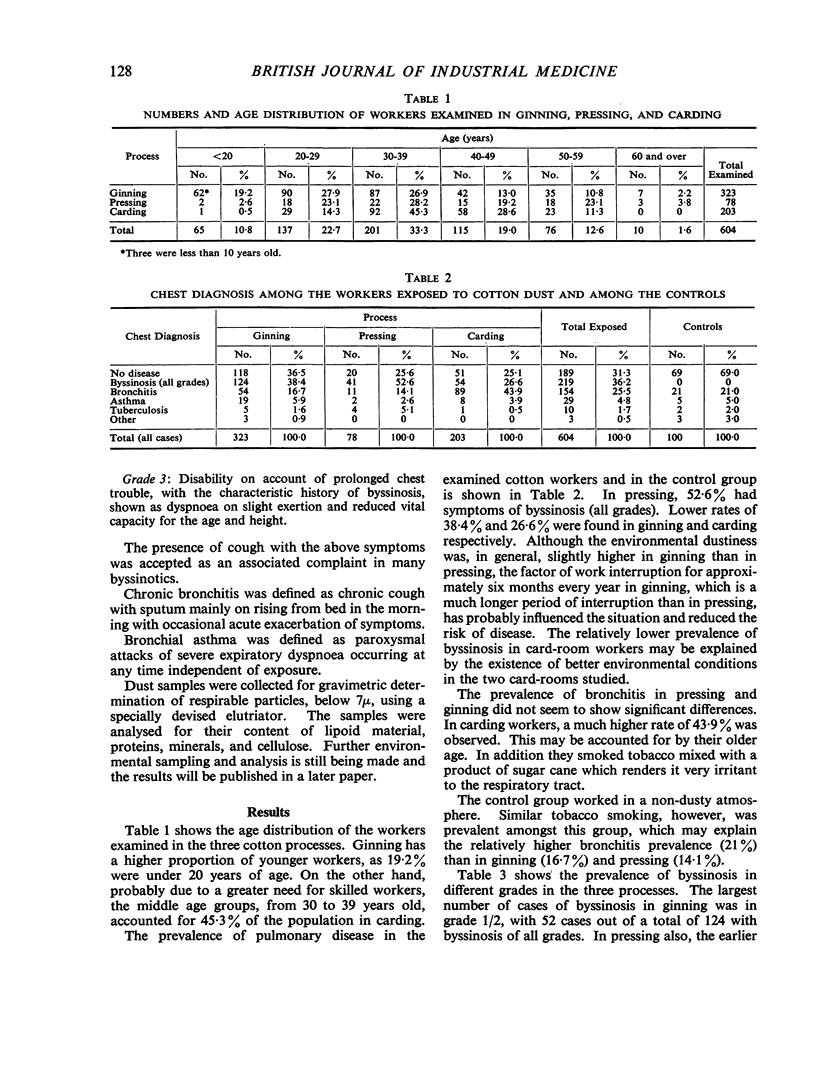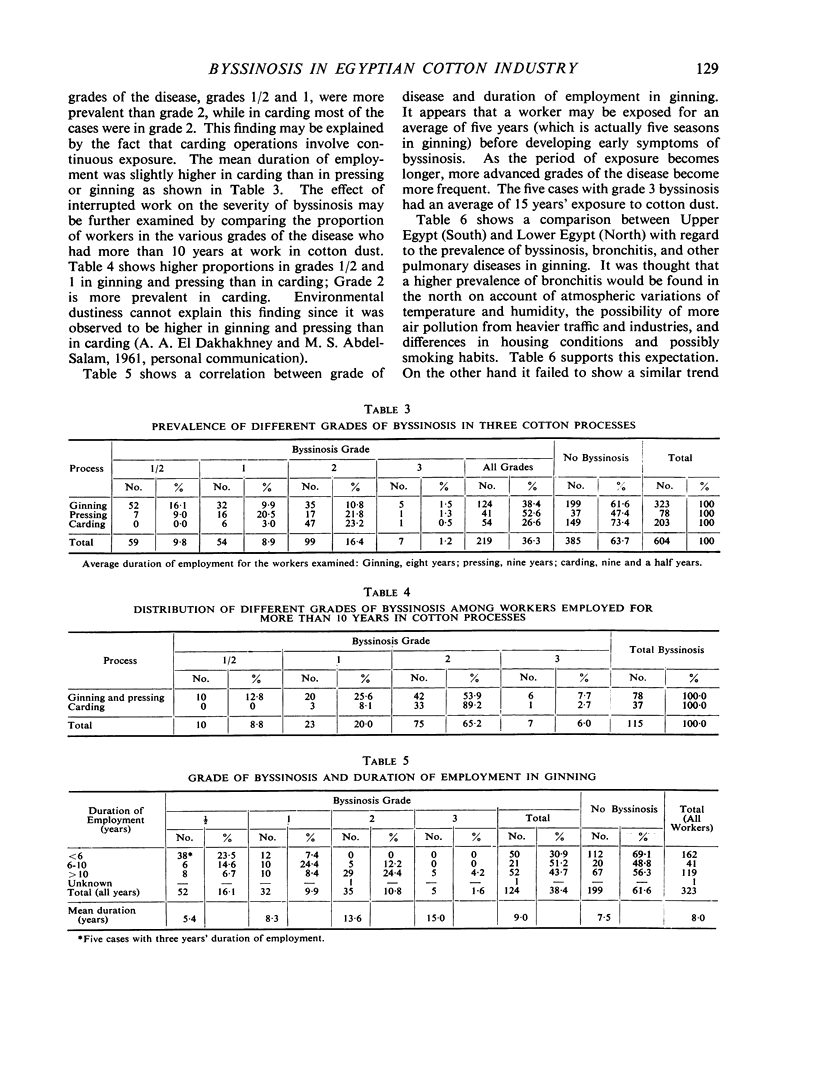Abstract
An epidemiological investigation in 11 ginneries representing the ginning industry in Egypt demonstrated the existence of byssinosis among 38·4% of the workers. Studies of two pressing plants and two card-rooms in Alexandria showed a prevalence of byssinosis of 52·6% and 26·6% respectively. The ages of those exposed and the duration of exposure were considered in relation to the prevalence of byssinosis, and it appears that a short duration of exposure in ginning may result in early manifestations of byssinosis at a relatively young age. The interruption of exposure due to seasonal activity in ginning and partially in pressing resulted in a higher proportion of workers with the early stages of the disease. This contrasted with results in carding where exposure is continuous, and a higher proportion of workers have later stages of the disease. This suggests a delay in the progress of the disease due to periodic interruption of exposure.
The comparison between the prevalence of byssinosis and that of chronic bronchitis has shown that these diseases are not necessarily associated, although additional stress due to dust exposure in chronic bronchitis is not denied.
Full text
PDF




Selected References
These references are in PubMed. This may not be the complete list of references from this article.
- GOODMAN N., LANE R. E., RAMPLING S. B. Chronic bronchitis: an introductory examination of existing data. Br Med J. 1953 Aug 1;2(4830):237–243. doi: 10.1136/bmj.2.4830.237. [DOI] [PMC free article] [PubMed] [Google Scholar]
- SCHILLING R. S. F., GOODMAN N., O'SULLIVAN J. G. Cardiovascular disease in cotton workers. II. A clinical study with special reference to hypertension. Br J Ind Med. 1952 Apr;9(2):146–166. doi: 10.1136/oem.9.2.146. [DOI] [PMC free article] [PubMed] [Google Scholar]


